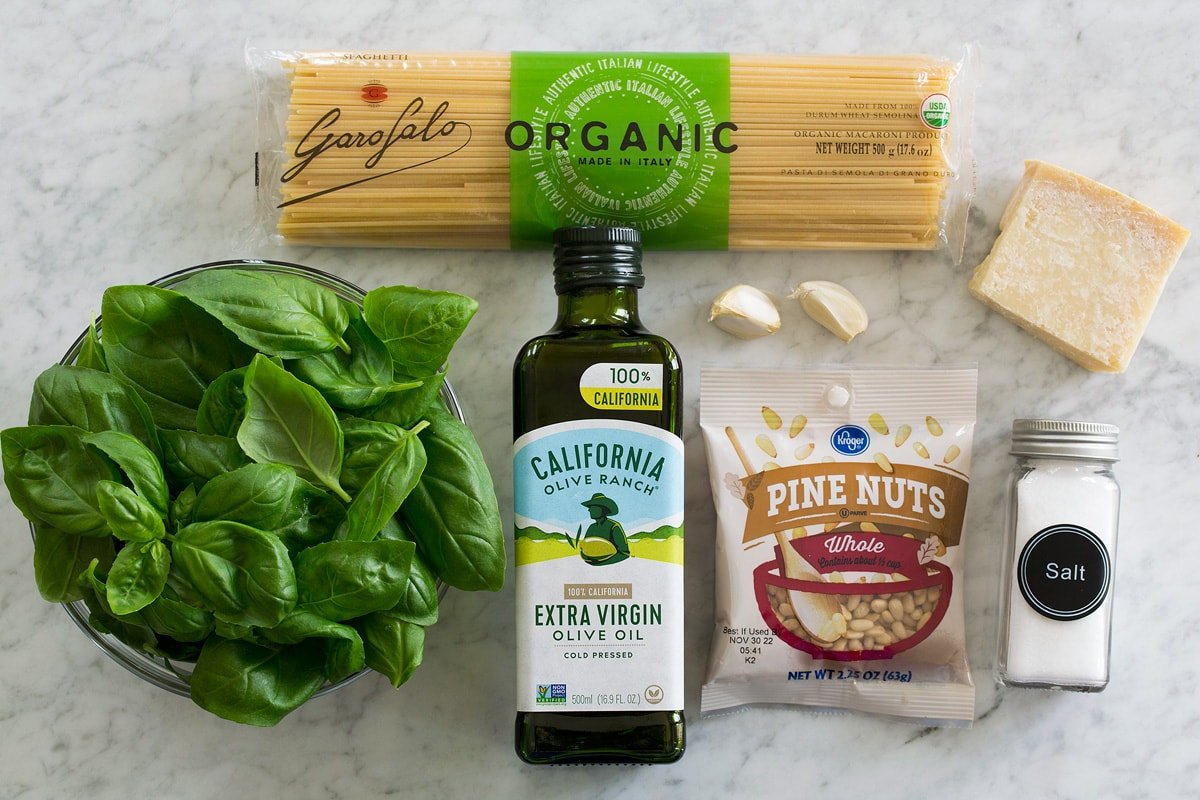Pesto Pasta
Homemade Pesto Pasta that’s overflowing with flavor! It’s made with hearty spaghetti and a generous coating of herbaceous, fresh basil pesto sauce. Then it’s finished with sharp aged parmesan and rich pine nuts for a toasty crunch.
Pesto Pasta Recipe Ingredients
12 oz. dry spaghetti
Salt
3 cups (slightly packed, 65g) fresh basil leaves
1/2 cup grated (35g) parmesan
1/4 cup (36g) pine nuts (toasted or raw)
2 medium garlic cloves, peeled and smashed
1/2 cup extra virgin olive oil
1/2 cup pasta water, divided
How to Make Pesto Pasta
Cook spaghetti in salted water to al dente according to package directions. Before draining be sure to reserve the 1/2 cup pasta water.
Make pesto sauce: To a 7-cup food processor add basil leaves, parmesan, pine nuts and garlic. Cover with lid and pulse in short bursts until finely minced.
Scrape down food processor. Cover, then with food processor running pour olive oil in through the feed tube of the lid. Don’t over-process, just blend.
Season with salt to taste.
Drain pasta, reserving some pasta water: Drain pasta once al dente then add to a large serving bowl. Pour in 1/4 cup pasta water and toss. Let it cool 1 – 2 minutes.
Toss pasta and pesto: Add all of the pesto and toss. Thin with up to 1/4 cup more pasta water as desired and garnish with more parmesan and pine nuts if desired.
Possible Recipe Variations
Other great ways to make this include:
Add grilled chicken or rotisserie chicken, or cooked shrimp for protein.
Include some roasted vegetables (tossing right into the pasta).
Add fresh or roasted grape tomatoes or cherry tomatoes (halved).
Toss in fresh mozzarella pearls.
Substitute other nuts such as walnuts or slivered almonds.
Try it with various pastas. Such as different cuts (penne, farfelle, rotini, campanelle, orzo, etc.), fresh pasta (you’ll need a greater weight), or pasta with a different grain base such as whole wheat, rice, lentil or chick pea pasta.
Or substitute tortellini, ravioli or gnocchi.
Helpful Tips
Use the best quality ingredients. Good really fresh basil is key, go for a real parmesan, and don’t use cheap olive oil.
Don’t over-process the pesto. Just finely mince the basil. You don’t want a paste.
Season the boiling water with salt to build up it’s flavor (right when it reaches boiling point). Otherwise the pasta can taste bland.
Using pasta water in the dish is key. It helps thin the sauce and also acts as a good binder with it’s starchiness.




